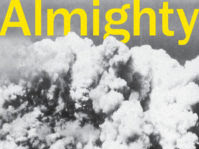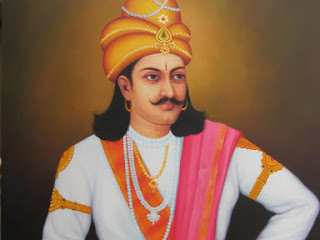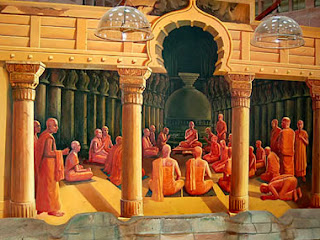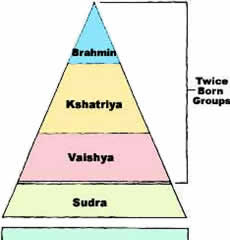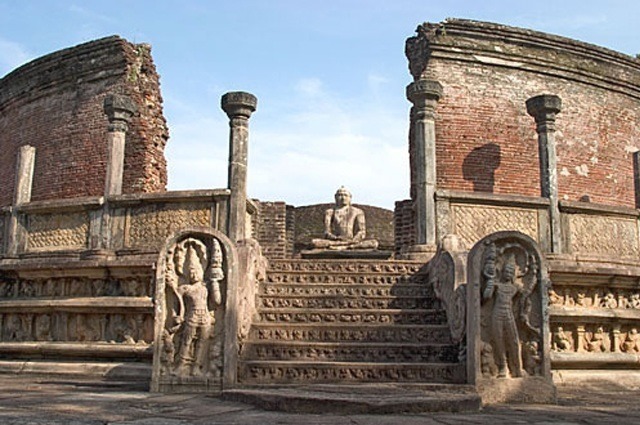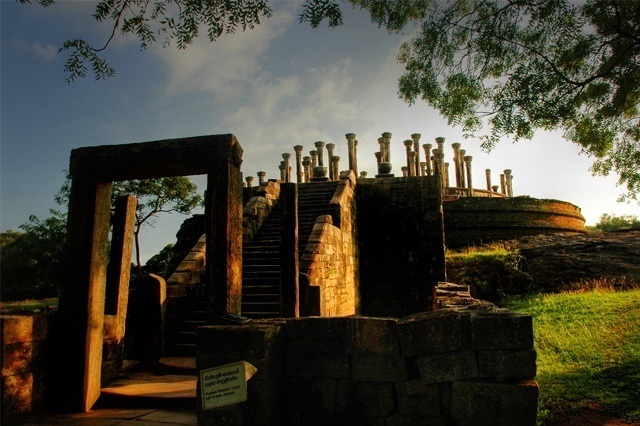Saragarhi was a small settlement in the border district of Kohat, located on the barren slopes of the Samana Range which happened to be the North-West Frontier Province under the British India.
The nearest permanent garrison from where British reinforcements could come was at Kohat, about 60 kilometers East of Fort Lockhart. In August and September 1897, the Pashtuns made sporadic attempts to capture the British forts but were thwarted in their attempts. On 3rd and 9th September, Afridi tribes, owing allegiance to Afghans attacked Fort Gulistan, but the attacks were repulsed by the arrival of reinforcement from Fort Lockhart.
With their failure to capture Fort Gulistan, the tribesmen decided to change their objective of attack. A large force of the Orakzai tribe along with the Afridi Lashkar turned their attention to the more vulnerable Saragarhi Post. By that time the 4th Battalion of the Sikh regiment was holding the forts.
The tribesman surrounded Saragarhi on 12 September, knowing full well that this would cut communications and troop movements between the forts of Lockhart and Gulistan. The attack on Saragarhi commenced on the morning of 12th September.
The tribesman launched a fierce and determined attack at around 9am but the approaches were well covered and the defenders held on to their post. They were repulsed with around 60 losses as the Sikhs fired upon the mass of men.
This was followed by a pitched battle of six long hours. At last, there was a lull in the gruesome battle. But it lasted only a short while. It gave the defenders time to reorganize and replenish ammunition from their depleted reserves.
The hopelessness of the situation however could not have been lost on the defenders for though one attack had been repulsed, they were completely outnumbered and the enemy was forming up to attack once again.
The tribals regrouped and attacked again, but the defenders remained resolute and held on to their positions. Attempts to send reinforcements from Fort Lockhart were thwarted by the tribals and Saragarhi remained isolated.
Charge after charge was repulsed but, in the process, the ranks of the defenders started dwindling. The attackers managed to create a smoke screen on one flank of the post by burning dry bushes. Covered from observation and fire of the defenders, two of the enemy managed to get close to the perimeter wall of the post and succeeded in making a breach in the wall, a development that was observed from Fort Lockhart and flashed to the post.
With the defenders being forced to split their small forces, the defense of the gate was weakened. The tribesman seized the opportunity to pile up the pressure and it was not long before the enemy rushed both the gate and the breach.
Thereafter, one of the fiercest hand to hand fights followed and the wounded fought with the rest, till the last drop of blood oozed out from their body and they lay still, their weapon still firmly held in their hand.
The 21 Sikhs had made a heroic last stand, and the enemy had paid a high price for their victory, with around 180 dead.
On 14 September, the post was retaken with intensive artillery fire support. The Afghans later stated that they had lost about 180 killed and many more wounded in the capture of Saragarhi.
Battle Of Saragarhi In 1897
The nearest permanent garrison from where British reinforcements could come was at Kohat, about 60 kilometers East of Fort Lockhart. In August and September 1897, the Pashtuns made sporadic attempts to capture the British forts but were thwarted in their attempts. On 3rd and 9th September, Afridi tribes, owing allegiance to Afghans attacked Fort Gulistan, but the attacks were repulsed by the arrival of reinforcement from Fort Lockhart.
With their failure to capture Fort Gulistan, the tribesmen decided to change their objective of attack. A large force of the Orakzai tribe along with the Afridi Lashkar turned their attention to the more vulnerable Saragarhi Post. By that time the 4th Battalion of the Sikh regiment was holding the forts.
The tribesman surrounded Saragarhi on 12 September, knowing full well that this would cut communications and troop movements between the forts of Lockhart and Gulistan. The attack on Saragarhi commenced on the morning of 12th September.
The tribesman launched a fierce and determined attack at around 9am but the approaches were well covered and the defenders held on to their post. They were repulsed with around 60 losses as the Sikhs fired upon the mass of men.
This was followed by a pitched battle of six long hours. At last, there was a lull in the gruesome battle. But it lasted only a short while. It gave the defenders time to reorganize and replenish ammunition from their depleted reserves.
The hopelessness of the situation however could not have been lost on the defenders for though one attack had been repulsed, they were completely outnumbered and the enemy was forming up to attack once again.
The tribals regrouped and attacked again, but the defenders remained resolute and held on to their positions. Attempts to send reinforcements from Fort Lockhart were thwarted by the tribals and Saragarhi remained isolated.
Charge after charge was repulsed but, in the process, the ranks of the defenders started dwindling. The attackers managed to create a smoke screen on one flank of the post by burning dry bushes. Covered from observation and fire of the defenders, two of the enemy managed to get close to the perimeter wall of the post and succeeded in making a breach in the wall, a development that was observed from Fort Lockhart and flashed to the post.
With the defenders being forced to split their small forces, the defense of the gate was weakened. The tribesman seized the opportunity to pile up the pressure and it was not long before the enemy rushed both the gate and the breach.
Thereafter, one of the fiercest hand to hand fights followed and the wounded fought with the rest, till the last drop of blood oozed out from their body and they lay still, their weapon still firmly held in their hand.
The 21 Sikhs had made a heroic last stand, and the enemy had paid a high price for their victory, with around 180 dead.
On 14 September, the post was retaken with intensive artillery fire support. The Afghans later stated that they had lost about 180 killed and many more wounded in the capture of Saragarhi.
Battle Of Saragarhi In 1897



